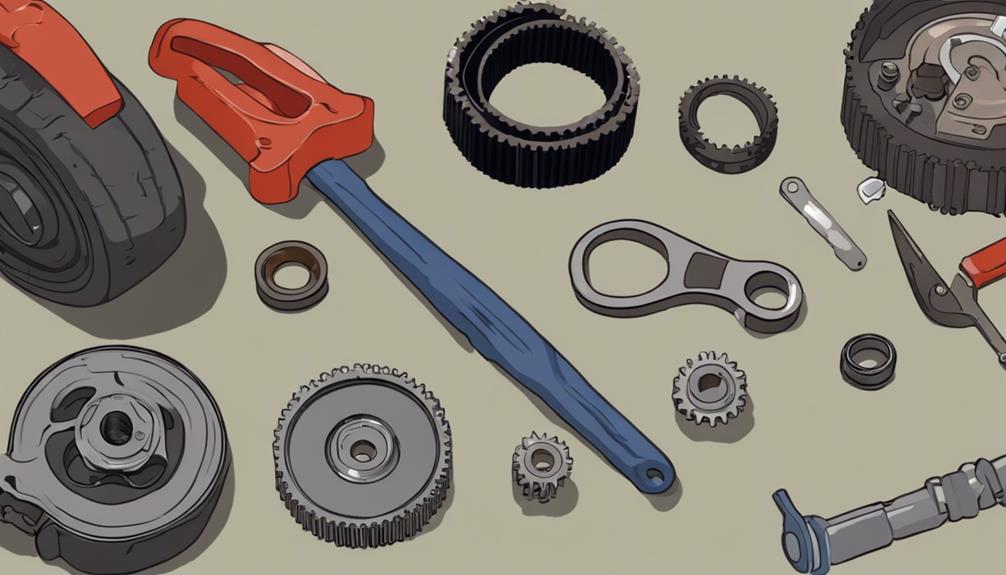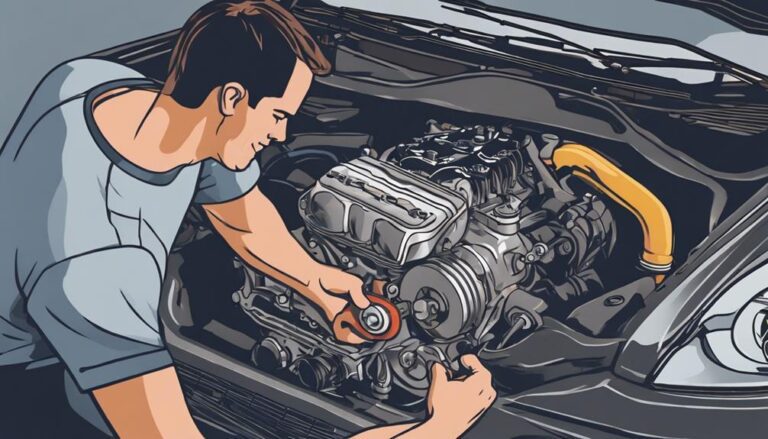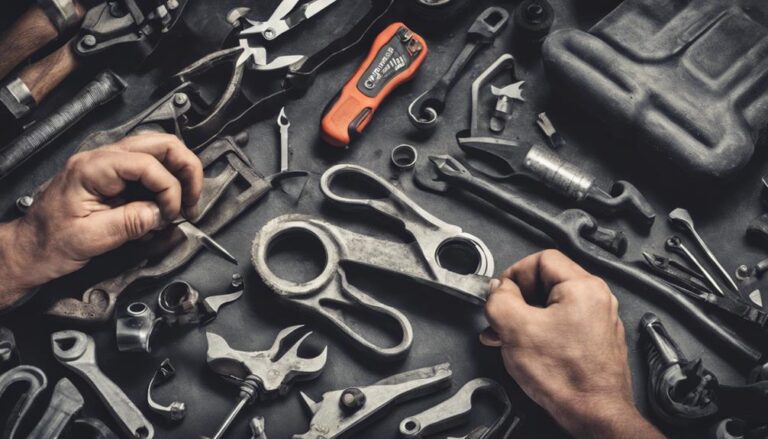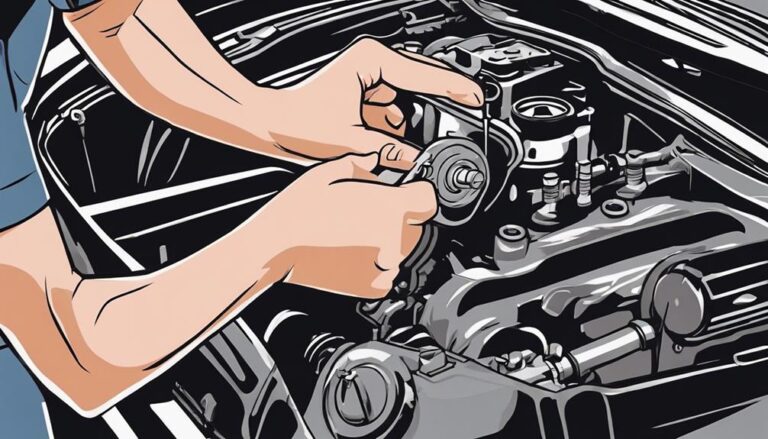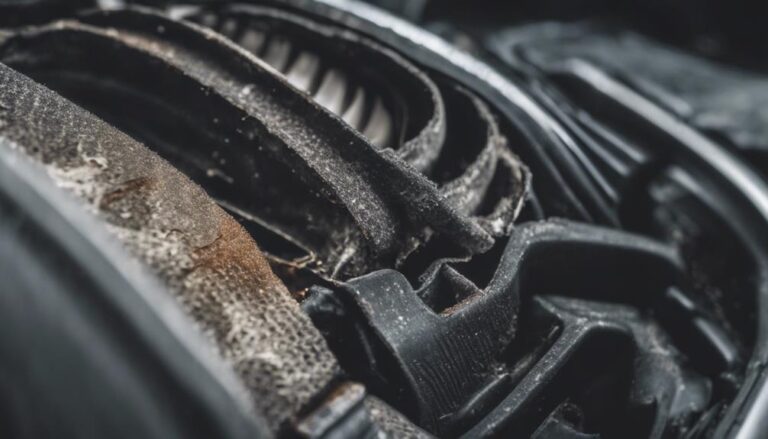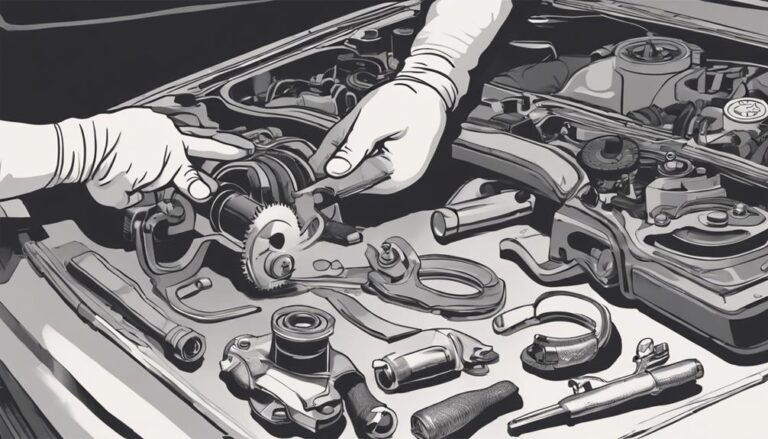What Is the Cost of Drive Belt and Tensioner Repair?
You're cruising down the road when suddenly, there's an unsettling noise coming from under the hood. Could it be your drive belt or tensioner acting up?
Understanding the cost of drive belt and tensioner repair can save you from a bigger headache down the line. Let's uncover the factors influencing these repair expenses and explore ways to manage them efficiently.
Key Takeaways
- Drive belt and tensioner repair costs range from $100 to $200 on average.
- Proper maintenance can extend tensioner lifespan and reduce repair expenses.
- Invest in quality parts to prevent premature tensioner failure.
- Consider DIY for cost savings or professional repair for expertise and efficiency.
Average Cost of Drive Belt Replacement
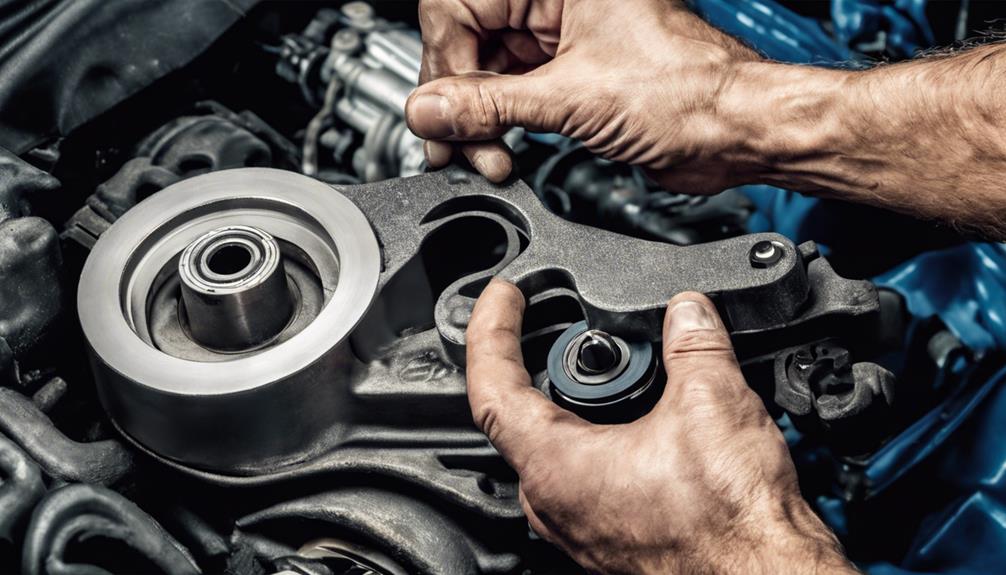
When looking to replace a drive belt, the average cost typically ranges from $100 to $200, depending on the make and model of your vehicle. Part prices vary based on the quality and brand of the belt, with some premium belts costing more. Labor charges can also impact the total cost, as some vehicles have more complex systems that require additional time for replacement.
Part prices for drive belts can range from $30 to $100, with premium belts or those for luxury vehicles costing more. Labor charges can vary greatly based on the mechanic or repair shop, with hourly rates influencing the final cost. It's important to take into account both part prices and labor charges when estimating the total expense of replacing a drive belt.
To make sure you're getting a fair price, it's advisable to obtain quotes from multiple mechanics or repair shops. This way, you can compare the costs and make an informed decision. Remember that investing in a high-quality drive belt and professional installation can help prevent future issues and guarantee the longevity of your vehicle's engine.
Factors Affecting Tensioner Repair Costs
To accurately assess the cost of tensioner repair, it is essential to understand the key factors influencing the overall expense. Two critical elements that greatly impact tensioner repair costs are the material choices for the tensioner and proper maintenance practices.
Factors Affecting Tensioner Repair Costs
| Factors | Description | Impact on Repair Costs |
|---|---|---|
| Tensioner Material Choices | Tensioners can be made of various materials like plastic, aluminum, or steel, each affecting durability and cost. | High-quality materials may increase initial cost but reduce the need for frequent repairs. |
| Tensioner Maintenance Tips | Regular inspection, proper alignment, and tension adjustment can prolong the tensioner's life and prevent failures. | Following maintenance tips can lower long-term repair expenses. |
Considering the tensioner material choices and adhering to tensioner maintenance tips can help you manage and potentially reduce the overall repair costs associated with your vehicle's tensioner system.
Additional Costs for Tensioner Replacement
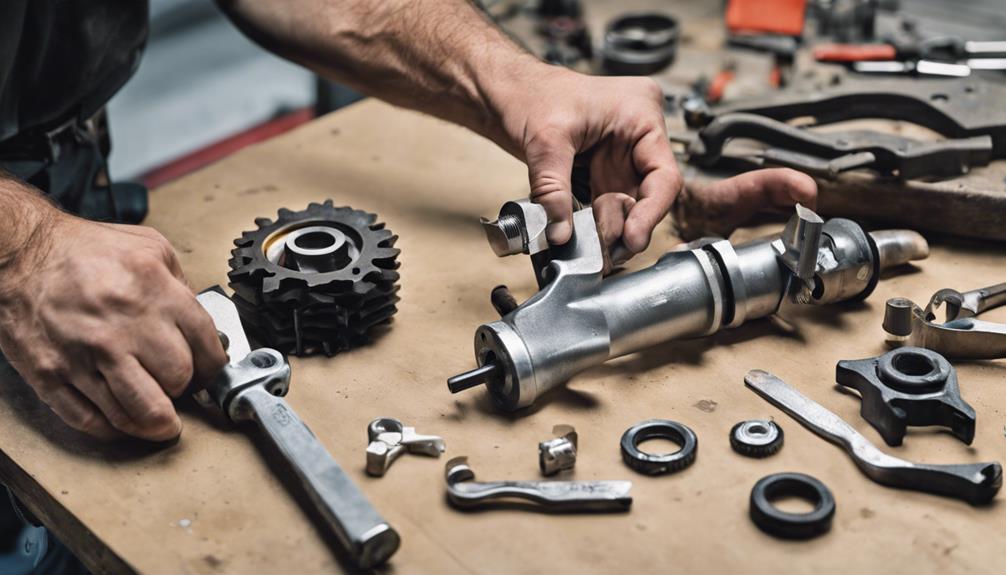
The replacement of the tensioner may entail additional costs beyond the standard repair expenses. Understanding the tensioner's lifespan is important in determining the need for replacement. Tensioners are designed to last for varying durations depending on the make and model of the vehicle, with some lasting around 60,000 to 100,000 miles. Factors such as the quality of the tensioner and driving conditions can also impact its lifespan.
Furthermore, the functionality of the tensioner is another aspect to take into account. A failing tensioner can lead to issues such as belt slippage, increased wear on the belt, and potential damage to other engine components. When replacing the tensioner, it's important to make sure that the new tensioner is of high quality to prevent premature failure.
These additional costs for tensioner replacement should be factored into the overall repair expenses. It's recommended to consult with a professional mechanic to assess the tensioner's condition accurately and determine if replacement is necessary to maintain the best functioning of the drive belt system.
Comparison: DIY Vs. Professional Repair Costs
Considering the complexity of drive belt and tensioner repair, it is valuable to compare the costs associated with DIY versus professional repair methods. When opting for a DIY approach, you can save on labor costs but must invest time and effort into understanding the repair process. On the other hand, professional expertise guarantees a quicker and potentially more precise repair, but the service comes at a higher cost. Below is a comparison table to help you weigh the pros and cons of each method:
| Aspect | DIY Repair | Professional Repair |
|---|---|---|
| Cost | Lower upfront cost, potential savings | Higher upfront cost, includes labor |
| Expertise Required | Moderate mechanical knowledge needed | Skilled professionals handle the repair |
| Time | Longer repair time due to personal effort | Quicker repair completion due to experience |
Whether you choose the DIY route for potential savings or opt for professional assistance for peace of mind and expertise, understanding these cost differences can help you make an informed decision tailored to your preferences and budget.
Tips to Save Money on Belt and Tensioner Repair

For cost-effective belt and tensioner repair, consider implementing these money-saving strategies. To maximize maintenance savings, regularly inspect your drive belt and tensioner for signs of wear and tear, such as cracks, fraying, or unusual noises. By catching issues early, you can prevent more extensive damage that may require costly repairs. Additionally, opt for high-quality replacement parts that offer durability and longevity, reducing the frequency of replacements and saving you money in the long run.
DIY alternatives can also help cut down on expenses. Many basic belt and tensioner replacements can be done at home with the right tools and guidance. Online tutorials and automotive forums provide step-by-step instructions for DIY repairs, empowering you to take control of your vehicle maintenance and avoid labor costs from professional mechanics. However, be cautious not to attempt complex repairs beyond your skill level, as improper installation can lead to further damage and increased expenses. By combining regular maintenance checks, quality parts, and DIY efforts, you can effectively save money on belt and tensioner repair.
Frequently Asked Questions
Are There Any Common Signs or Symptoms That Indicate a Drive Belt or Tensioner Repair May Be Needed?
If you notice warning signs like squealing, vibrating, or visible wear, it may be time for drive belt or tensioner repair. Regular inspection can catch issues early. DIY troubleshooting can help, but professional diagnosis guarantees accurate repair.
How Often Should Drive Belts and Tensioners Be Inspected and Replaced to Prevent Unexpected Breakdowns?
To prevent unexpected breakdowns, make sure you inspect drive belts and tensioners regularly. Preventative maintenance is key. Check them at least every 30,000 miles or as per your vehicle manual. Timely replacements can save you from costly repairs.
Can Drive Belt and Tensioner Repairs Be Covered by Car Insurance or Extended Warranties?
Insurance coverage and warranties may help offset repair costs for drive belt and tensioner issues. Check your policy details for savings opportunities. Comprehend the terms to make sure you are prepared for any unexpected breakdowns.
Are There Any Specific Brands or Types of Drive Belts and Tensioners That Are Known to Last Longer or Perform Better?
Looking for top rated brands for lasting drive belts and tensioners? Wondering about durability and performance comparisons? Consider factors like longevity and quality when choosing. Which brands will outlast the rest?
Are There Any Recommended Maintenance Tips or Practices to Extend the Lifespan of Drive Belts and Tensioners?
To enhance the longevity of drive belts and tensioners, prioritize regular maintenance practices. Properly adjust belt tension and monitor performance indicators. Preventative actions like visual inspections, timely replacements, and using quality components can greatly extend their lifespan.
Conclusion
Ultimately, when considering the cost of drive belt and tensioner repair, it's important to weigh the expenses against the benefits of maintaining a smoothly running vehicle.
While the price may seem high at first glance, investing in this repair can prevent more costly issues down the road. So, think of it as a wise investment in the longevity and performance of your vehicle, rather than just a simple repair cost.

